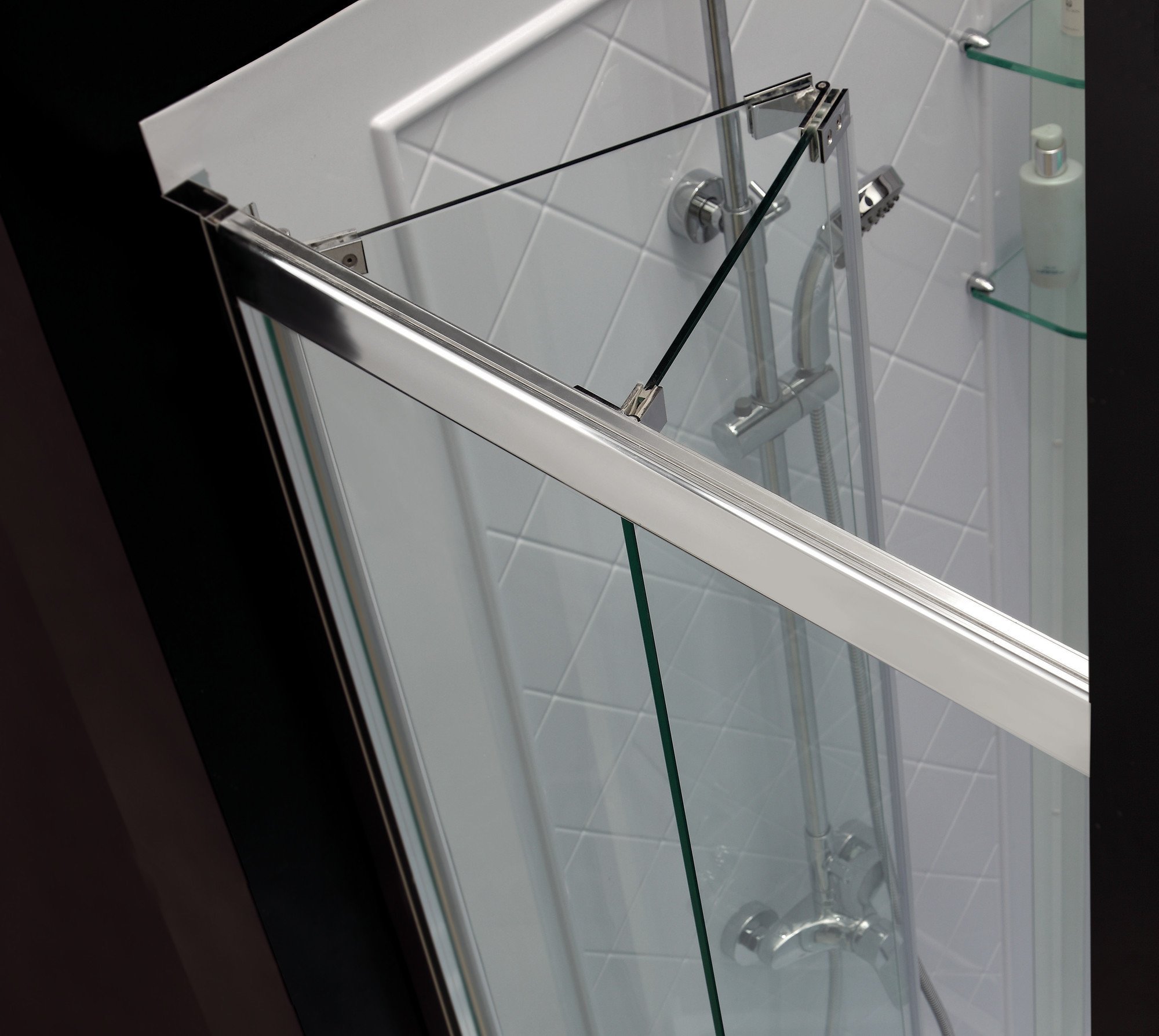Types of Shower Doors for Small Bathrooms

Choosing the right shower door for a small bathroom is crucial, as it can significantly impact the overall space, functionality, and aesthetic appeal. While there are numerous options available, three primary types stand out: frameless, semi-frameless, and framed shower doors. Each type presents unique advantages and disadvantages, influencing the final decision based on factors like space, budget, and desired style.
Comparison of Shower Door Types for Small Bathrooms
This section provides a detailed comparison table outlining the pros and cons of each shower door type, considering space, budget, and style.
| Type | Pros | Cons |
|---|---|---|
| Frameless |
|
|
| Semi-frameless |
|
|
| Framed |
|
|
Impact of Shower Door Type on Small Bathroom Aesthetics and Functionality
Each shower door type contributes differently to the overall aesthetic and functionality of a small bathroom.
Frameless shower doors are the most popular choice for small bathrooms as they create an illusion of more space due to their minimalist design.
Semi-frameless doors offer a balance between style and functionality, providing a more affordable alternative to frameless doors while maintaining a sleek appearance.
Framed doors, while being the most budget-friendly option, can make a small bathroom feel cramped due to their thicker frames.
Choosing the Right Size and Shape

Getting the right size and shape of shower door for your small bathroom is crucial for both functionality and aesthetics. It’s not just about fitting the door; it’s about maximizing space and creating a sense of openness.
Determining Optimal Size and Shape
The first step is to measure your shower area accurately. This includes the width, height, and any obstructions like pipes or fixtures. You’ll also want to consider the size of your bathroom overall and the flow of traffic around the shower.
Maximizing Space and Openness, Best shower doors for small bathrooms
To maximize space in a small bathroom, choose a shower door that allows for easy access and doesn’t take up too much floor area. Here are some tips:
* Single-door configurations: These doors are ideal for smaller showers as they take up less space than double doors.
* Frameless designs: Frameless shower doors create an illusion of more space by minimizing visual obstructions.
* Clear glass: Clear glass shower doors help to visually expand the space, making the bathroom feel larger.
* Sliding doors: Sliding doors are a great space-saving option, especially in small bathrooms with limited space.
Visual Representation of Shower Door Shapes
To visualize the different shower door shapes and their suitability for small bathrooms, consider the following:
* Single-door: This is the most common type of shower door and is perfect for smaller showers. It is typically hinged on one side and swings open to allow access.
* Double-door: These doors are ideal for larger showers and provide more space for entry and exit. They can be hinged on both sides or in the middle.
* Corner configurations: Corner shower doors are designed to fit in the corner of a bathroom and can be single or double doors. They are a great option for maximizing space in small bathrooms.
Remember, the key to choosing the right shower door for a small bathroom is to find a balance between functionality and aesthetics. By considering the tips above, you can create a space that is both practical and stylish.
Factors to Consider for Small Bathrooms: Best Shower Doors For Small Bathrooms

Choosing the right shower door for a small bathroom involves careful consideration of various factors that impact both functionality and aesthetics. You need to find the perfect balance between maximizing space, enhancing the design, and ensuring practicality for everyday use.
Budget
Budget is a key factor in determining the type and material of shower door you can afford. Shower doors come in a wide range of prices, depending on the material, size, and features.
- Framed shower doors are typically the most affordable option, as they use less material and are easier to manufacture.
- Frameless shower doors are more expensive but offer a sleek and modern look. They are also easier to clean, as there are no frames to collect dirt and grime.
- Sliding shower doors are another option that can save space, but they can be more expensive than swinging doors. They are also generally more durable than swinging doors.
It’s important to set a realistic budget and shop around to compare prices from different manufacturers.
Style
The style of your shower door should complement the overall design of your bathroom.
- Traditional bathrooms often feature framed shower doors with frosted glass or etched designs.
- Modern bathrooms typically feature frameless shower doors with clear glass or minimalist hardware.
- Contemporary bathrooms may use a combination of both framed and frameless elements, with a focus on clean lines and geometric shapes.
Consider the existing fixtures, colors, and materials in your bathroom to choose a shower door that complements the overall aesthetic.
Maintenance Requirements
Shower doors require regular cleaning to prevent the buildup of soap scum, water spots, and mildew.
- Framed shower doors are easier to clean, as the frames help to hide dirt and grime.
- Frameless shower doors require more frequent cleaning, as the glass is more exposed to dirt and grime.
- Glass with a protective coating, such as a water-repellent finish, can make cleaning easier and reduce the need for frequent scrubbing.
Choose a shower door that is easy to clean and maintain, especially if you have a busy lifestyle.
